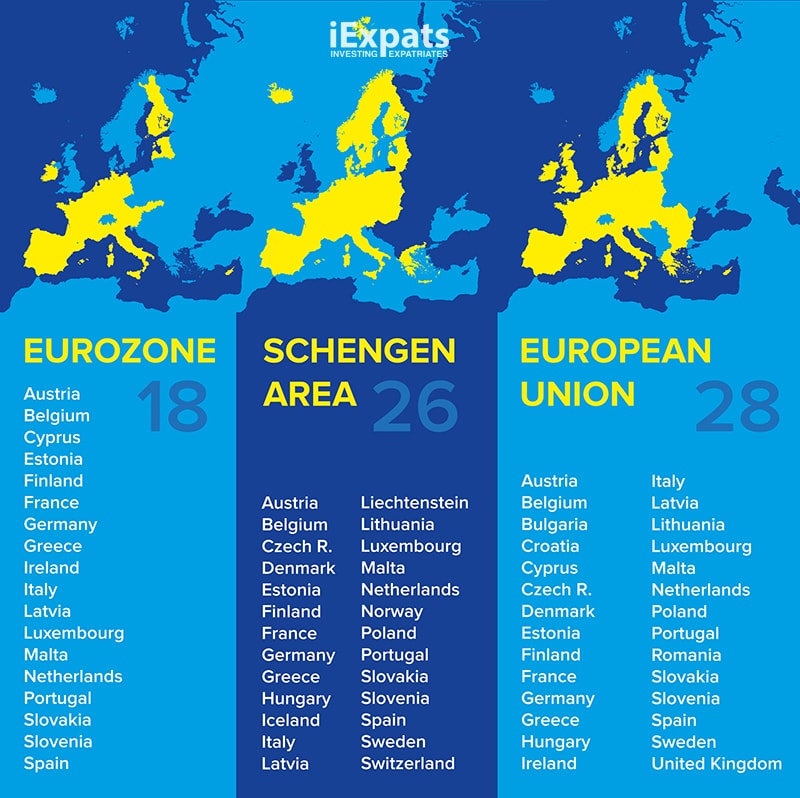Estimated reading time: 5 minutes
You need a visa if you are British and want to spend more than three months in Europe without breaking the 90/180-day rule.
Brexit has ended the special arrangements that European Union membership offered British travellers.
Now, to stay for longer than 90 days in any 180-day period, expats need a visa – and to make sure visitors keep to the rules, their passports are date stamped on entry and exit.
Many expats opt for golden visas. But these have a lot of rules that need to be met before being issues.
Table of contents
The 90/180-Day Rule
Many travellers are confused by the 90/180-day rule agreed upon between the UK and the European Union.
The rule allows British travellers to spend up to 90 days visiting more than one country in any 180-day period.
The length of time travellers can stay depends on whether the country is within the Schengen visa-free travel zone.
The rule does not allow travellers to work in the place they are visiting.
The Schengen Zone covers most EU states, including Iceland, Liechtenstein, Norway, and Switzerland.
Bulgaria, Cyprus and Romania are not in the Schengen Zone. Travellers can spend up to 90 days in 180 days in these countries, but the number of days does not count towards the 90/180 day Schengen Zone rule.

The rule says a stay cannot last more than 90 days in any 180-day rolling period. To check a visit is within the limit, try the following:
- Find the date you intend to leave the Schengen Zone on your next trip
- Trackback 180 days to find the date the 180-day period starts
- Count the number of days spent in the Schengen Zone during that 180-day period
- If you are making more than one trip in 180 days, add the number of days that trip lasts to the count above – it doesn’t matter if the trips are to different Schengen countries.
If the days in Europe add up to more than 90, you need to adjust your time in Europe or apply for a visa.
Once the 90-day cap is reached, a traveller must wait another 90 days before re-entering the Schengen Zone.
How The 90-180 Rule Works
A frequent traveller had no trips to Europe in 2022, but several booked for 2023.
The first is a 10-day Schengen Zone visit starting from January 1. The relevant 180 days count back from the end of the visit (January 10), giving a score of 10 out of 180, so the trip is within the rule’s parameters.
The next trip is 30 days in the Schengen Zone from March 1, then seven days in Romania. The 180-day period now runs back from the end of the trip – April 7. The number of days in Europe for that 180-day period is now 47, but seven are excluded as they are outside the Schengen Zone to Romania.
The tally so far is 47 less seven, making 40 relevant days.
From June 1, the traveller spends another 30 days in the Schengen Zone. The 180-day period runs from January 2 until June 30, with 70 days spent in Europe.
Staying In Europe For More Than 90 Days
Don’t forget the 90/180-day visa is for short stays. For anything longer, including tourist visits, travellers need q formal residence, work or study visa.
The list of requirements differs between countries, so find out the latest details from the consulate or embassy of the country you are visiting.
British travellers can find the latest advice on the UK government’s website.
How Do I Apply To Visit The Schengen Zone?
ETIAS, a European Union body, runs the Schengen Zone visa process.
Visitors can check their visa eligibility and apply online for the documents through the ETIAS website.
The visa application fee is seven euros.
Europe’s 90/180-Day Visa Rule FAQ
The Schengen Zone is a visa-free travel area compromising most European Union countries. Effectively, after crossing into one Schengen country, you can travel on to cross borders into any number of other Schengen countries without any restrictions.
The Schengen Zone covers most European Union states, including Iceland, Liechtenstein, Norway and Switzerland.
A visa is conditional permission granted by a government to a foreign visitor to enter, stay in or leave a country or territory.
A passport is a government-issued document verifying a traveller’s citizenship and identity.
A visa is a temporary document placed within a passport confirming the holder can stay in another country for a specific time.
For stays beyond 180 days, travellers need permission to live, work or study in most European countries. Many governments consider six months (180 days) when residence kicks in and visitors become liable to pay taxes.
Outstaying the 90-day visa can lead to imposing one or more of:
– Fines
– Deportation
– A ban from entering the Schengen Zone
The time limits apply to any days spent in the Schengen Zone, regardless of what happens. So, if a traveller lands at Calais and spends two days crossing France for Switzerland, where they have booked a 14-night stay, books the time as 18 days. That’s two days each way in France plus the stay in Switzerland.
Full-time students studying within the Schengen Zone must apply for a visa. Students visiting Europe for workshops, conferences or short-stay classes probably don’t but check the local consulate or embassy to be sure.
Schengen visas are OK if you visit Europe on business but do not intend to work while on your trip. Conferences, client meetings and site visits are OK without a work visa but you must still obey the 90/180-day rule.
Related Information
Below is a list of related articles you may find of interest.

Everything I read relates to people using the full 90 days. Many won’t use the full amount.
I was in Spain :
11/06/22 -18/03/22 7 days
31/10/22 – 29/11/22. 28 days
03/03/23 – 29/03/23. 27 days
My question is can I return
10/10/23 – 18/11/23 for 34 days?
What if I live in Northern Ireland and have a British passport